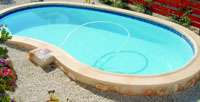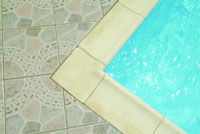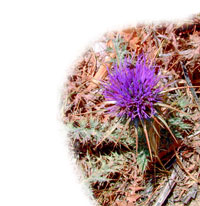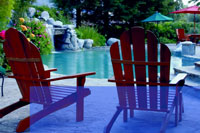 |
||||
|
Keeping it clear Maintenance is an unavoidable fact of life if you want your pool to be clean and hygienic, sparkling and inviting. These basic steps will help you to keep your pool clear and safe for use over the coming months. Water chemistry If your pool has been out of use for any length of time, the water needs to be chemically-treated to ensure that the pH is balanced and that it is clean and safe for use. This is a simple three or four-step procedure which begins by testing the chlorine (or bromine) and alkalinity of the water using a test kit or test strips – the ideal pH range is between 7.4 and 7.6. If the pH level It is advisable to check the chlorine (or bromine) and pH levels at least two to three times a week. In addition to chemicals, circulation and filtration, a number of external variables affect the chemical balance of water – overall climate; evaporation through intense sunlight; swim-load (how many people are using the pool and how often); and proximity to dirt or debris, such as nearby construction sites or wooded, flowered or grassy areas – are all common elements. Reacting to changes in these variables will help you to keep ahead of the possible effects on the water and minimise corrective maintenance. Testing the water Test kits contain two chambers for water samples and reagents (solutions/dyes) are added to show whether a certain chemical is within the given acceptable range. Test strips operate in much the same way but they are already pregnated with the reagents and are merely held below the surface of the water to gauge the chemical levels. • Rinse the sample chambers with mains water before each use. • Fill the chambers with pool water from approximately 30cm, or elbow-depth below the surface. • Add the required number of reagent drops, one drop at a time. (The amount of drops you will need varies from brand to brand, so check the instructions carefully.) • Hold the test chambers against a light coloured background, and compare the water colour with the sample chart provided. • If the colours m • After use, store the test kit and chemicals in a cool, dark place, out of children’s reach. How to backwash your pool Backwashing is simply reversing the water flow to clean the filter. Always follow the manufacturer’s instructions for your own model but, as a guideline, the process is generally as follows: • Turn the pump off. • Turn the multiport or push/pull valve to backwash position. • Open the backwash gate valve (if there is one). • Turn the pump on and run for two minutes or until the water runs clear. • Turn the pump off. • Turn the multiport to rinse position. • Turn the pump on and run for 30-60 seconds. • Turn the pump off. • Turn the multiport valve to filter position. • Close the backwash gate valve (if there is one) and turn the pump back on. • Check the water level in the pool, which is lowered by backwashing and rinsing, then top it up if necessary. Circulation and filtration In conjunction with a number of chemicals, it is the circulation and filtration process that determines the quality of your pool water. Filtration works by pumping and circulating the water through the filter to prevent dirt particles from returning to the pool. In most cases, pool water enters the top of the filter tank via one or more skimmer weirs, travels downward through the filter, and exits as clean water at the bottom of the filter tank. This process continues until dirt accumulates and the pressure gauge indicates that it is time to backwash the filter. For any filter system to operate effectively, the water in the pool must be at the correct operating level, at least halfway up the skimmer weir. Your pool will lose water via splash-out, back-washing and evaporation, which accelerates rapidly during windy, humid and sunny weather conditions, so make sure that you check the water level regularly and use your garden hose (or automatic fill line) to refill the pool. Routine maintenance It is always better to maintain a pool and prevent problems than it is to rectify them. You will need to assess your own degree of maintenance depending on the climate and the level of pool usage, so there is no single ‘correct’ procedure to > Remove all leaves and other large debris from the pool (they could clog the drain and skimmer baskets, restricting circulation and filtration; absorb necessary chlorine; introduce algae spores; or damage the vacuum equipment). > Clean skimmer and pump baskets. > Clean the filter, then backwash. > Manually vacuum or let your automatic cleaner vacuum the surfaces. > Test the water and adjust the chemicals if necessary. > Shock (super chlorinate) as required. Trouble shooting Certain factors will effect the water quality and this at-a-glance chart will help you to determine the possible causes of a problem and implement the correct solution. Problems & possible causes Low chlorine or bromine Hot, humid weather with intense sunlight. High level of pool usage. Low Cyanuric Acid level if used. Algae Inefficient circulation and filtration. Low chlorine or bromine level. Neglecting to shock. Neglecting routine maintenance. Air-borne algae spores. Cloudy water Ineffective circulation and filtration. Low chlorine or bromine level. Neglecting to shock. High pH and alkalinity. Early stages of algae. Tiny particles suspended in the water, which can only be removed by using a Clarifier. Greenish water Low chlorine or bromine level. Neglecting to shock. Early stages of algae. Eye and skin irritation High chlorine level. Low chlorine level. High or low pH or alkalinity. Ammonia present which has created chloramines. Water line / scum ring) Suntan lotion, deodorant, or make-up. Dirt or other debris. Chemicals balanced but water chemistry still poor Inefficient circulation/filtration. Neglecting to Shock. Neglecting routine maintenance. Akis Charalambous | Aqualine Fibreglass Pools Next issue: the benefits of salt water pool systems |
||||
 is too high, add 500g hydrochloric acid (pH down) to reduce the level, test again after four hours and repeat until the balance is correct. If the pH level is too low, the procedure is the same but the required chemical is Soda Ash (pH up). In the evening add 1.5k of Shock chlorine and, the following morning, 1 litre of algaecide.
is too high, add 500g hydrochloric acid (pH down) to reduce the level, test again after four hours and repeat until the balance is correct. If the pH level is too low, the procedure is the same but the required chemical is Soda Ash (pH up). In the evening add 1.5k of Shock chlorine and, the following morning, 1 litre of algaecide. atch, the water is in balance. If they differ from the colours on the charts, simply add the required chemicals to increase or decrease the levels to bring them into the safe range. Chemicals are added directly into the pool water, not through the filter and, depending upon the instructions on the packaging, are either diluted first or added in their neat form.
atch, the water is in balance. If they differ from the colours on the charts, simply add the required chemicals to increase or decrease the levels to bring them into the safe range. Chemicals are added directly into the pool water, not through the filter and, depending upon the instructions on the packaging, are either diluted first or added in their neat form.
 follow. However, by carrying out a few, well-recognised tasks once or twice a week, you can keep your pool clear and hygienic and ready for use at all times.
follow. However, by carrying out a few, well-recognised tasks once or twice a week, you can keep your pool clear and hygienic and ready for use at all times.